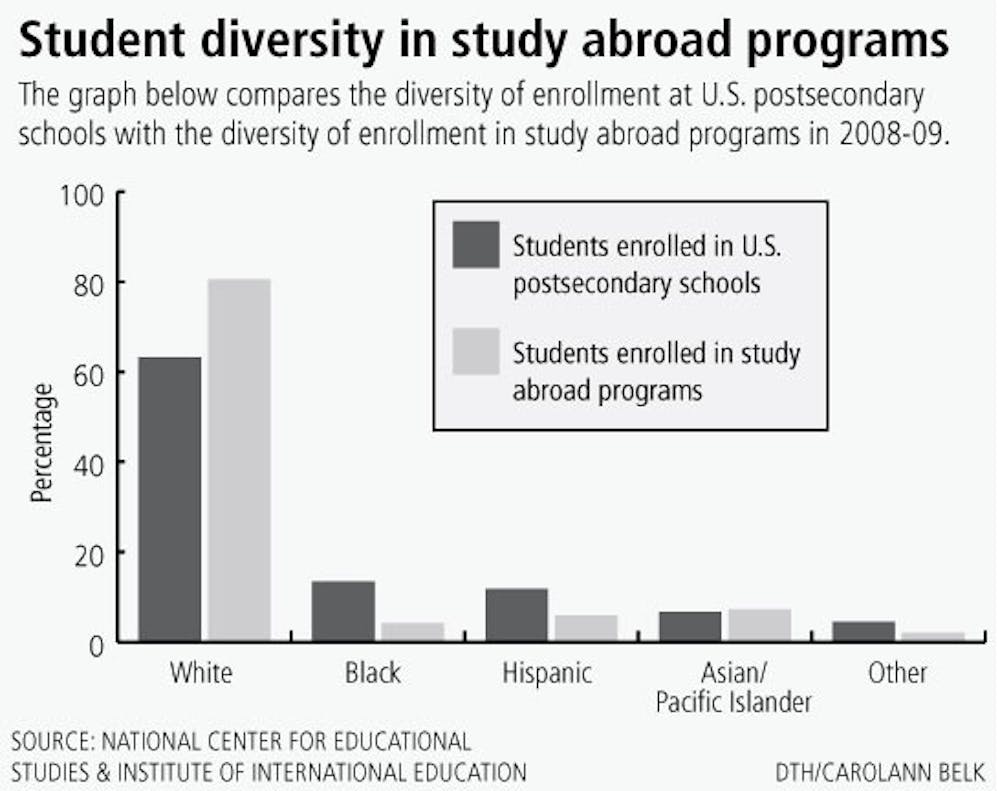White students hold an overwhelming majority in study abroad programs, according to a study to be published in print this month by Research in Higher Education.
They made up a little more than 60 percent of post-secondary education enrollment in 2008, according to the National Center for Educational Statistics.
But they are overrepresented in study abroad programs at 80.5 percent, according to the Institute of International Education’s 2008-2009 statistics.
And minority groups are underrepresented.
The discrepancy was greatest for black and Latino students.
Bob Miles, UNC associate dean for study abroad and international exchanges, said the reason for the lack of minority students studying abroad stems from the rough economy.
“We have no formal survey data that would allow us to explain underrepresentation, but informal feedback suggest that the additional cost of studying abroad may explain at least some of the underrepresentation,” he said.
Miles said that UNC does not have statistics on the number of minority students who choose to study abroad.
More than 20 percent of UNC study abroad students chose not to indicate their race, Miles said.




